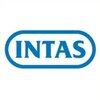Filter interviews by
Clear (1)
Lupin EHS Executive Interview Questions and Answers
Lupin EHS Executive Interview Experiences
1 interview found
I applied via Approached by Company and was interviewed in May 2024. There was 1 interview round.
Top trending discussions






Interview questions from similar companies

EHS Executive Interview Questions & Answers
Sun Pharmaceutical Industriesposted on 24 Sep 2023
I applied via Walk-in and was interviewed before Sep 2022. There were 3 interview rounds.
Interview Preparation Tips

Senior Officer Interview Questions & Answers
Sun Pharmaceutical Industriesposted on 13 May 2018
I applied via Other and was interviewed in Sep 2017. There were 4 interview rounds.
Interview Preparation Tips
And last question is why join the Sun pharma??
Skills: Communication, Body Language, Problem Solving
Duration: 1-3 Months

I applied via Referral and was interviewed before Aug 2021. There were 2 interview rounds.
Interview Preparation Tips

Medical Representative Interview Questions & Answers
Glenmark Pharmaceuticalsposted on 4 Feb 2021
Interview Questionnaire
1 Question
- Q1. Role of medical representative

Medical Representative Interview Questions & Answers
Alkem Laboratoriesposted on 11 Apr 2021
I applied via Referral and was interviewed before Apr 2020. There were 3 interview rounds.
Interview Questionnaire
1 Question
- Q1. Most of the question are about previous organization and products I am dealing with.
Interview Preparation Tips

I applied via Walk-in and was interviewed in Feb 2021. There were 6 interview rounds.
Interview Questionnaire
1 Question
- Q1. All questions are related to the area of work that we do in previous employer like analysis or documentation
Interview Preparation Tips

Executive Production Interview Questions & Answers
Alkem Laboratoriesposted on 25 Nov 2019
Interview Questionnaire
2 Questions
- Q1. Why should we recruite you?
- Q2. You should recruite me because i have strong technical background as well as i had worked in diversified areas i.e. process engineering, production and quality assurance. All these functions are base of p...

I applied via Walk-in and was interviewed before Aug 2019. There were 3 interview rounds.
Interview Questionnaire
6 Questions
- Q1. Why you interested to working in this organisation.. briefly?
- Q2. What is GPT test?
- Ans.
GPT test stands for Generalized Procrustes Analysis test.
GPT test is a statistical method used to analyze and compare shapes or configurations.
It is commonly used in fields such as anthropology, biology, and computer vision.
The test aligns and scales multiple shapes to a common reference shape, allowing for shape comparison and analysis.
GPT test can be used to study variations in shape, identify patterns, and assess di...
- Q3. What is cultures?
- Ans.
Cultures refer to the beliefs, customs, practices, and behaviors shared by a group of people.
Cultures are learned and passed down from generation to generation.
They include language, religion, food, clothing, art, music, and social norms.
Cultures vary across different regions, countries, and ethnic groups.
They influence individuals' values, attitudes, and behaviors.
Examples of cultures include Western culture, Asian cu
- Q4. What the size of tlc capillary?
- Ans.
The size of TLC capillary varies depending on the specific application and manufacturer.
The size of TLC capillary can range from 0.1 mm to 0.5 mm in diameter.
The length of TLC capillary can vary from a few centimeters to several meters.
Different capillary sizes are used for different types of TLC analyses, such as normal phase or reverse phase chromatography.
For example, a common size for normal phase TLC capillary is ...
- Q5. How much air filter filtered by laminar Hepa ?
- Ans.
The amount of air filtered by a laminar Hepa filter depends on its size and airflow rate.
The air filtration capacity of a laminar Hepa filter is measured in terms of its Clean Air Delivery Rate (CADR).
CADR is typically expressed in cubic feet per minute (CFM) or cubic meters per hour (m³/h).
The CADR of a laminar Hepa filter can vary depending on its dimensions and the fan speed or airflow rate.
For example, a small lami...
- Q6. Fullform of hepa
- Ans.
HEPA stands for High Efficiency Particulate Air.
HEPA is a type of air filter commonly used in cleanrooms and medical facilities.
It is designed to remove 99.97% of particles that are 0.3 micrometers or larger in size.
HEPA filters are used to maintain clean and sterile environments, preventing the spread of airborne contaminants.
Examples of HEPA applications include operating rooms, pharmaceutical manufacturing, and clea...
Interview Preparation Tips
Skills evaluated in this interview

Medical Representative Interview Questions & Answers
Alkem Laboratoriesposted on 19 Jan 2022
I applied via Walk-in and was interviewed before Jan 2021. There was 1 interview round.
Interview Questionnaire
1 Question
- Q1. What you studied so far
Interview Preparation Tips
Lupin Interview FAQs
Recently Viewed
Tell us how to improve this page.
Lupin Interviews By Designations
- Lupin Medical Representative Interview Questions
- Lupin Production Officer Interview Questions
- Lupin Officer Interview Questions
- Lupin Executive Interview Questions
- Lupin Senior Officer Interview Questions
- Lupin Research Associate Interview Questions
- Lupin Marketing Executive Interview Questions
- Lupin Executive Production Interview Questions
- Show more
Interview Questions for Popular Designations
- Senior Executive - EHS Interview Questions
- EHS Officer Interview Questions
- Assistant Manager - EHS Interview Questions
- Senior EHS Officer Interview Questions
- EHS Manager Interview Questions
- Head EHS Interview Questions
- Executive Production Interview Questions
- Executive Engineer Interview Questions
- Show more
Lupin EHS Executive Interview Process
based on 1 interview
Interview experience
Interview Questions from Similar Companies
Fast track your campus placements
Lupin EHS Executive Reviews and Ratings
based on 8 reviews
Rating in categories
|
Officer
1.8k
salaries
| ₹0 L/yr - ₹0 L/yr |
|
Executive
1.8k
salaries
| ₹0 L/yr - ₹0 L/yr |
|
Research Associate
863
salaries
| ₹0 L/yr - ₹0 L/yr |
|
Senior Executive
724
salaries
| ₹0 L/yr - ₹0 L/yr |
|
Production Officer
626
salaries
| ₹0 L/yr - ₹0 L/yr |

Sun Pharmaceutical Industries

DRJ & CO

Cipla

Biocon Limited
- Home >
- Interviews >
- Lupin Interview Questions >
- Lupin EHS Executive Interview Questions

















